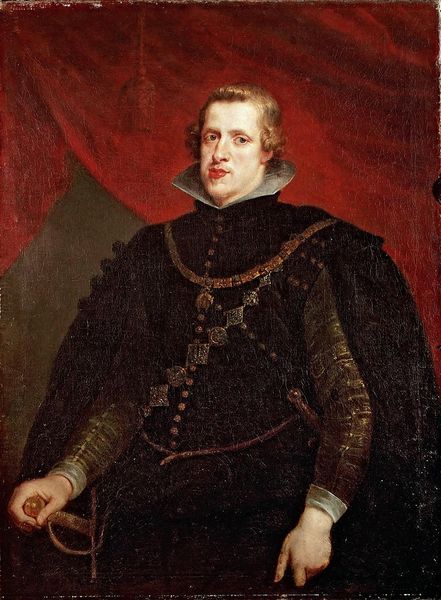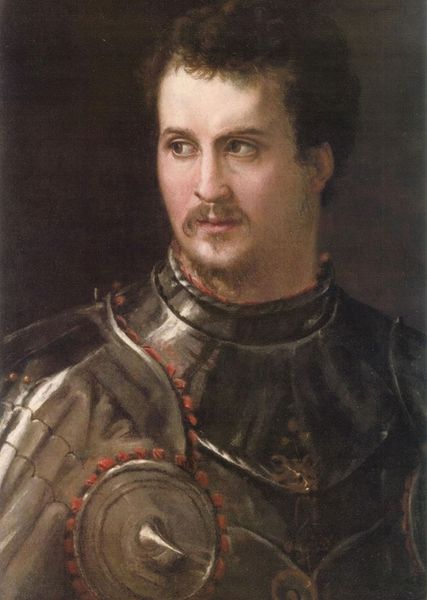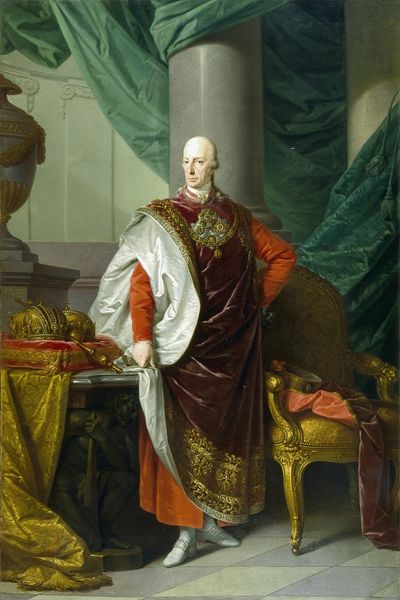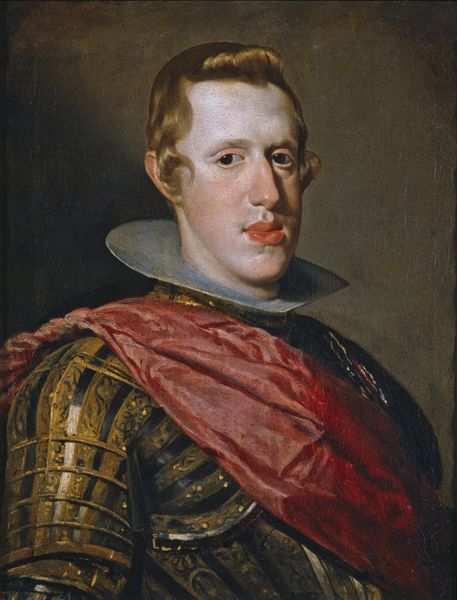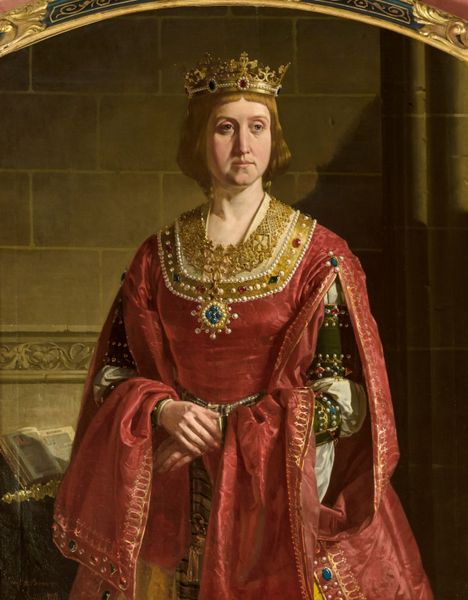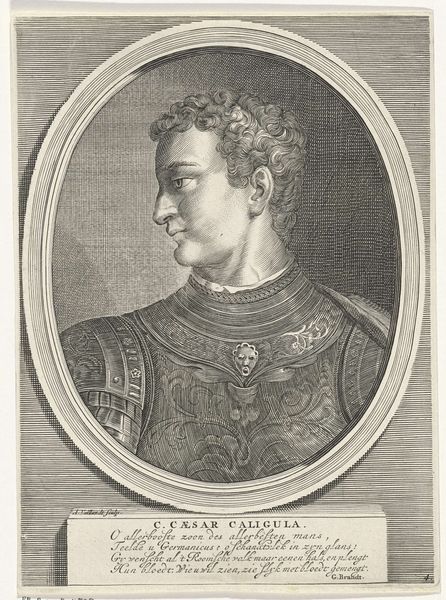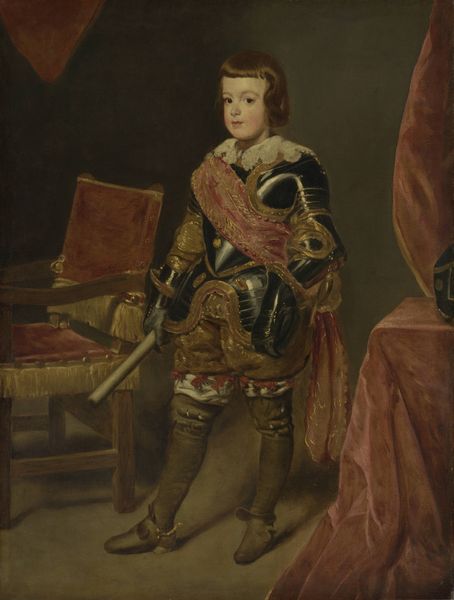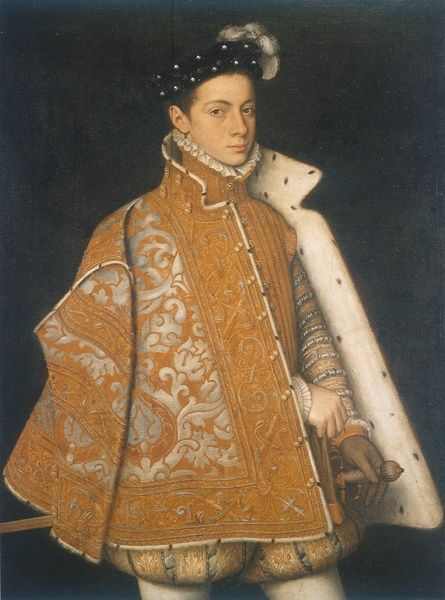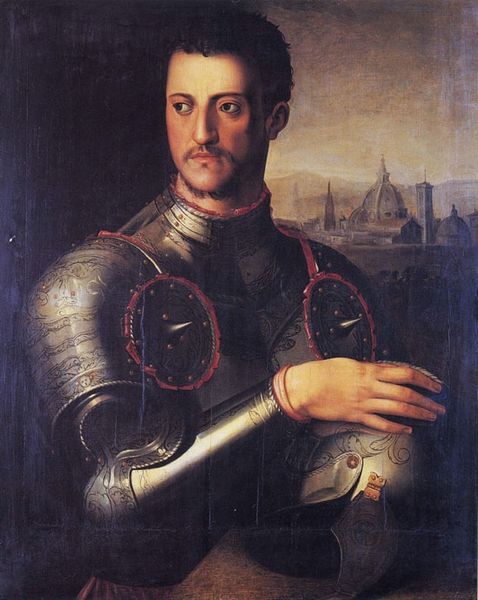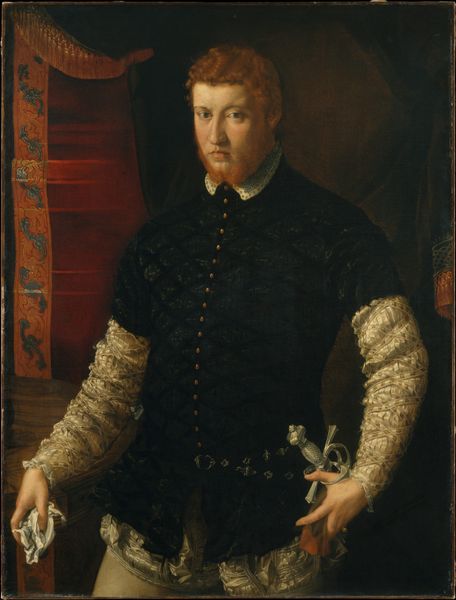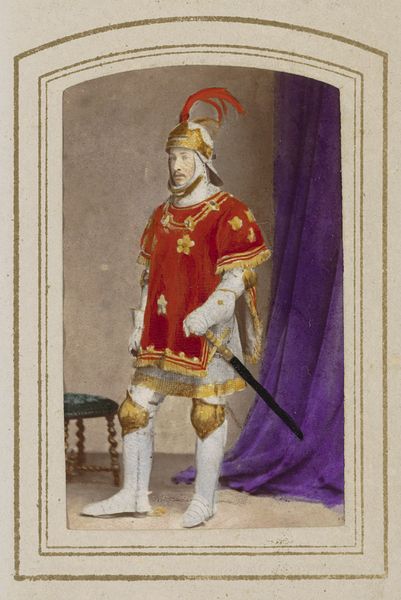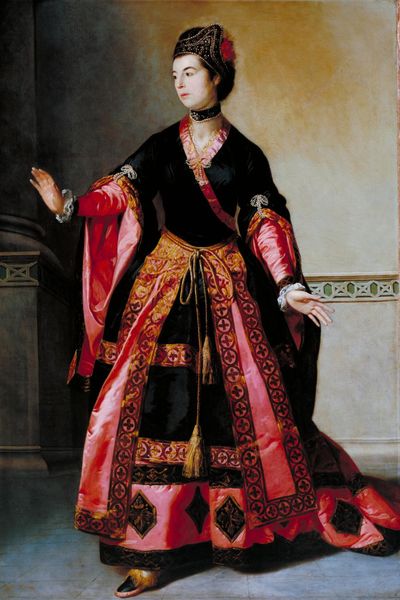
Copyright: Public domain
Curator: Here we have Joaquín Domínguez Bécquer’s “Pedro I De Castilla,” created in 1857 using oil paint. Editor: My first impression is that there’s a formality, yet something about the way his eyes are painted projects a certain distance, as though he’s burdened. Curator: Bécquer was part of a movement interested in re-evaluating historical figures, especially in relation to Spanish identity during the Romantic period. Pedro I, sometimes called “the Cruel” or “the Just,” became a flashpoint for debates about power and legitimacy. Considering Spain was dealing with its own monarchical challenges at this time, representations of previous rulers became increasingly political. Editor: That explains the somewhat anxious, almost haunted expression. Kingship, then and now, is weighed down with symbolic meaning. Notice how Bécquer focuses on Pedro's rich attire, emphasizing gold and ornate patterns. Crowns, historically, denote divine right but are also a powerful symbol of human ambition. Curator: Absolutely. Bécquer's decision to depict Pedro I in such splendor connects to Romanticism's interest in spectacle but also serves as a commentary on the performative nature of power. Who was he performing kingship for? Was it for his court, the painter, or even future generations? How do we negotiate the space between representation, history, and reality? Editor: The image plays with the idea of history as something both concrete – that heavy crown, the solid-looking metal of the armor peeking behind him – and intangible, represented by the very crafted, idealized nature of the portrait. It’s this tension between surface and substance. Are we looking at Pedro, or just his carefully constructed image? Curator: It's a brilliant meditation on authority. As our understanding of power structures has shifted, I find it really makes you question the ongoing legacy and accountability of past rulers. Editor: Yes, I’m drawn to how the painting uses universally understood visual markers of authority, like a king’s robes and crown, to hint at complex historical and social meanings. It invites us to consider not only the individual, but the symbolism inherent to such a figure.
Comments
No comments
Be the first to comment and join the conversation on the ultimate creative platform.
